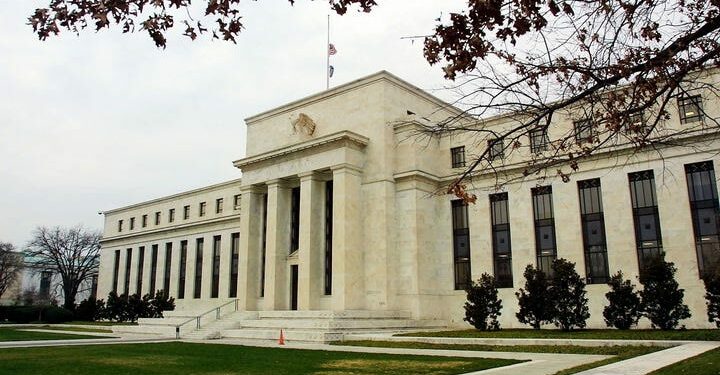Banks Are Putting the Federal Reserve to the “Stress Test”
A coalition of major banks and business groups, including JPMorgan, Citigroup, and Goldman Sachs, are suing the fed over its annual bank stress tests.
Cheddar
The economy ended 2024 in good shape, and its strength showed up in the banking industry, which reported a cumulative record profit of $268 billion last year.
That doesn’t mean the good times will roll on indefinitely, or that bank failures won’t rise sharply at some point in the future. New regulatory priorities under President Trump also could affect the financial strength of banks, but for now the industry looks healthy.
Along with the strong overall profit numbers, banks are showing health in their net interest margins, or the difference between what they earn on loans compared to what they pay in interest on deposits. Overall, 93.3% of banks insured by the Federal Deposit Insurance Corp. were profitable last year, according to the FDIC’s latest report, and only two small banks failed.
“At this stage of the U.S. economic cycle, the banking industry is well positioned to continue supporting customers, clients and communities with the financial services they want and need,” the American Bankers Association said in a commentary on the latest report for the year ending Dec. 31, 2024.
Could bank regulation change under the Trump Administration?
Yes, it might. Travis Hill was nominated as acting chairman of the FDIC on Jan. 20, upon President Trump’s inauguration, and immediately issued a lengthy list of priorities for the agency.
These include conducting a wholesale review of bank regulations, adopting a more “open-minded” approach to innovation and technology, improving the supervisory process to focus on core financial risks and less on processes and making sure the FDIC “stops coloring outside the lines,” meaning staying within the agency’s regulatory boundaries.
Hill, who in recent years worked in different roles at the FDIC and as senior counsel for the Senate Banking Committee, also wants to re-set a workforce culture within the agency “where misconduct is not tolerated and those who engage in misconduct are held accountable.”
That’s a reference to reports of sexual harassment and other mistreatment of employees at the FDIC in recent years.
Are financial regulations easing under Trump?
In some ways, yes. For example, the Consumer Financial Protection Bureau has been laying off staff and appears to be winding down operations since Trump took office. The CFPB, which has offered a way for consumers to voice and resolve complaints with various financial companies — not just banks — was created from the Dodd-Frank Act that was enacted after the banking crisis and the Great Recession of 2007-2009.
Trump also has been urging the Federal Reserve to lower interest rates to boost the economy. However, Mary C. Daly, president and CEO of the Federal Reserve Bank of San Francisco, said this isn’t dissimilar to what many other presidents have requested. Daly spoke during a February appearance in Phoenix at a conference hosted by the American Bankers Association.
Will the new FDIC priorities lead to more or fewer banks?
That’s hard to say. On the one hand, Hills said he wants to encourage policies that would ensure a “healthy pipeline of new entrants in the banking sector” but, on the other hand, he also wants to “improve the bank-merger approval process,” which could lead to more combinations.
The number of U.S. banks has declined every year for at least the past two decades. The 4,487 banks under the supervision of the FDIC at year-end was down from 8,976 in 2004.
Do most Americans care about the number of banks?
Probably not. In Arizona, for example, the big four banks of Chase, Western Alliance, Wells Fargo and Bank of America have captured nearly 76% of statewide deposits here, according to FDIC numbers through mid-2024. That proportion hasn’t changed much in recent years, though the rise of Western Alliance, headquartered in Phoenix, has been a notable development.
Big banks offer a full range of services along with more branches, even if many consumers don’t visit these offices more than a couple times a year. Chase, Wells Fargo and Bank of American collectively count 457 of all bank branches in Arizona, or nearly 47% of the 957 total reported as of mid-2024.
Conversely, smaller banks — more commonly known as community banks — can be good sources of lending and personalized help for many customers including small businesses. But very few new or “de novo” banks have appeared in recent years, nationally or in Arizona.
Should depositors worry about the safety of their money?
Generally no, but there are different considerations here. The FDIC reported that its deposit insurance fund is healthy, and you receive coverage on up to $250,000 in deposits at each institution — and sometimes more if you hold your money in different ownership categories. You can get even more protection if you divvy up your money among different banks, each with its own deposit insurance.
Still, not all of the financial products that you might hold at a bank are covered. Money-market mutual funds are a good example. Although these investments have an excellent long-term safety record, they aren’t deposits, with the federal backing that comes with them. The key point: Understand the types of instruments in which you hold your money at a bank. The insurance basics are similar at credit unions.
What did Martin Gruenberg, Biden’s FDIC chair, say about banks?
During a talk prior to his resignation Jan. 19, Gruenberg analyzed past periods of bank failures and said many of the same risks could recur, especially involving the growing array of financial companies that aren’t banks and fall outside of the purview of the FDIC and other regulators.
These problems include interest-rate risks for banks, liquidity risks, too much leverage, inadequate capital, too-rapid growth for some banks, a reliance on high amounts of uninsured deposits and new financial products that aren’t well understood.
In some respects Gruenberg added, the risks are greater now because today’s largest banks are bigger, more complex and more deeply intertwined than ever before.
Reach the writer at [email protected]
Source link : http://www.bing.com/news/apiclick.aspx?ref=FexRss&aid=&tid=67c328bf5b744442aa58e7796df32d8e&url=https%3A%2F%2Fwww.usatoday.com%2Fstory%2Fmoney%2Fbusiness%2F2025%2F03%2F01%2Farizona-banks-2025-health%2F80840521007%2F&c=10549571373153015057&mkt=en-us
Author :
Publish date : 2025-02-28 22:05:00
Copyright for syndicated content belongs to the linked Source.












